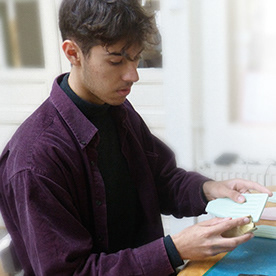What it does
Coral Alert collects data and protects reefs from damages done by unsustainable tourism. By working together, it forms a barrier that blocks tourist from entering sections of reef if needed, allowing the natural restoration of the coral reef.
Your inspiration
Coral reefs takes up 0.1% of the worlds oceans but is home to 50% of marine diversity and supports over a billion dollars of the worlds economy. However, Reefs are threatened and by 2050, 90% of all reefs in the world will disappear. Being guided by experts like blue lab at Nausicca and coral guardians, we found that awareness and prevention is the key to long term coral reef survival. We also decided to focus on unsustainable tourism which holds a serious impact to corals. From this we need to find the balance between the impacts of tourist at reefs but still allowing the tourism economy to continue.
How it works
Coral Alert can be placed in specific locations in the reefs. The Buoy would start collecting data and monitoring at the reefs and will remain operational with the help of wave current generators inside of the buoy. Coral Alert would be held down by weights. Made with Calcium Carbonate, a material similar to corals, acts like habitats for marine organisms. To ensure that the natural scenery is not compromised. The Buoy would be hidden underwater when things are going smoothly. However, if it sense damage from the tourist, it is alerted to float to the top and deploying its float barrier. The Buoys would work together to form a visible barrier, indicating no entry to specific affected regions. The number of days the buoys would be up, would be determined by how severe the issues are. In general, we want to give enough time for the coral reefs and its ecosystem to natural get back to its stable conditions.
Design process
The process starts with the analysis phase. By first knowing more about the coral reef ecosystem, damages and the current solutions. We talked to many experts, the results showed that unsustainable tourism was a huge reason to the depletion of healthy reefs. Entering the development phase, the goals here was to prevent tourist from entering certain areas at points in time, to allow the coral reefs to natural get back to its stable conditions. We achieved this by creating a monitoring system that creates barriers to sections of reefs when it sense the damages. This barriers will continue to pop up and back down in different areas in the long run, to prevent a total devastation of the reefs. We keep the buoy hidden for most of the time to prevent the obstruction of the natural scenery. From the first sketches to the mock-ups in order to get an idea of the right size and functioning system, we tried to look for a different design that could be the right balance between all the different features of the product: the inflated part with its wind resistant design to the weight material that is made to have a natural growth on it. We explored different 3D tools while maintaining discussion with experts to develop a credible solution.
How it is different
Currently, there are no solutions that deals with data collecting, visual prevention and awareness at the same time for tourist. By also dealing with the issues before the need for restoration, we cut down on both the time and effort it takes to fix the problem. Additionally, as many solutions focuses on short term minor improvements, we wanted to look at long term awareness, sustainability of tourist and prevention at reefs. This would create a more healthy relationship with humans and corals in the long run, allowing the natural diversity of reefs to grow for many years to come.
Future plans
We are currently looking into how we can move forward with this project. The solution itself can also be branched out, not just to other reefs and bigger areas, but to more forms of awareness and alerts. Things like oil spill alerts, or even shark alerts are just some of the examples.We would therefore like to present the project to associations and agencies in order to find a research and development partner to test our solution and implement it as far as possible.



Connect